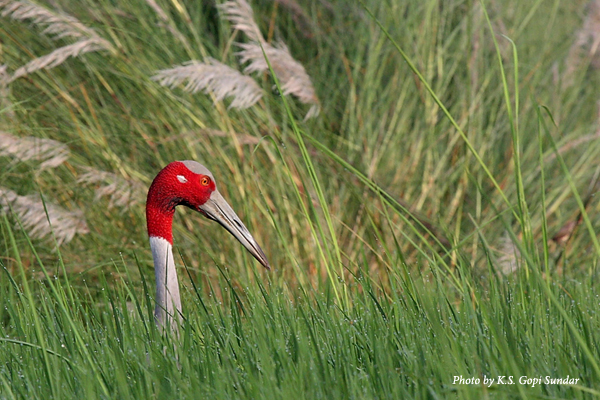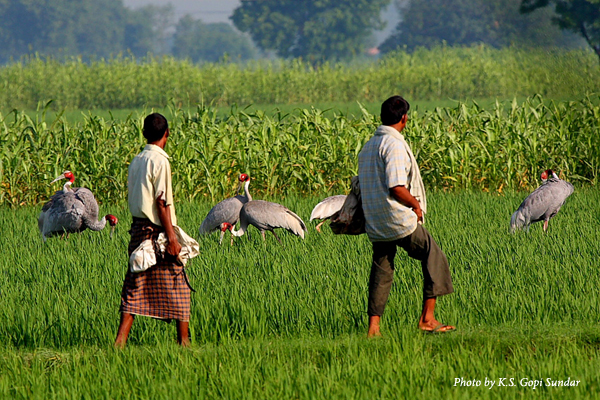
This research is published in the latest issue of the journal Waterbirds. Click here to read the abstract.
Throughout the world, cranes time their nesting to wet seasons, ensuring abundant resources for growing families. Migratory species, such as Siberian Cranes in East Asia or Sandhill Cranes in North America, return to their breeding areas as spring returns to northern latitudes, bringing plentiful food for hungry chicks and open water for safe nesting.
Non-migratory crane species also time their nesting to seasonal conditions. In India, Sarus Cranes nest during the annual monsoon, when yearly rains replenish the landscape. Occasionally the cranes also will nest outside of the monsoon season. Until recently, several hypotheses for this behavior have been suggested, but careful evaluation of these hypotheses has been absent.
Our SarusScape Program Director K.S. Gopi Sundar, along with colleagues in Rajasthan and Gujarat, India, compiled 15 years of observational data (2004-2017) gathered over four states – a large swathe of the species’ distribution – to explore the factors potentially responsible for unseasonal nesting by Sarus Cranes. A staggering 5,000 breeding records were assembled for this analysis.

What did we discover? Nests outside the monsoon were very rare (0.3% of all nests). These were initiated when Sarus Crane pairs had access to artificial water sources, such as irrigation canals or reservoirs used for rice farming, or faced abnormal monsoons. Importantly, unseasonal nests were initiated only when breeding pairs had been unsuccessful raising chicks in the previous primary nesting season – the cranes were opportunistically re-nesting when conditions allowed.
Ultimately, we discovered that altered cropping patterns associated with increased artificial irrigation and changing rainfall patterns appear responsible for unseasonal nesting in Sarus Cranes. We also believe it’s possible that nesting of this species outside the monsoon may increase in response to further increased changes in cropping patterns and rainfall conditions.
Although only accounting for a very small percentage of nests, this research collaboration was critical for carefully reviewing many years of data to better understand the species’ current ecology, while providing evidence for possible future trends.
Special thanks to my colleagues Yaseen Mohammed and Kandarp Kathju, who contributed countless hours in gathering and reviewing the data for this paper.
 Story submitted by K.S. Gopi Sundar, SarusScape Program Director for the International Crane Foundation. Click here to learn more about our work in Southern Asia.
Story submitted by K.S. Gopi Sundar, SarusScape Program Director for the International Crane Foundation. Click here to learn more about our work in Southern Asia.
